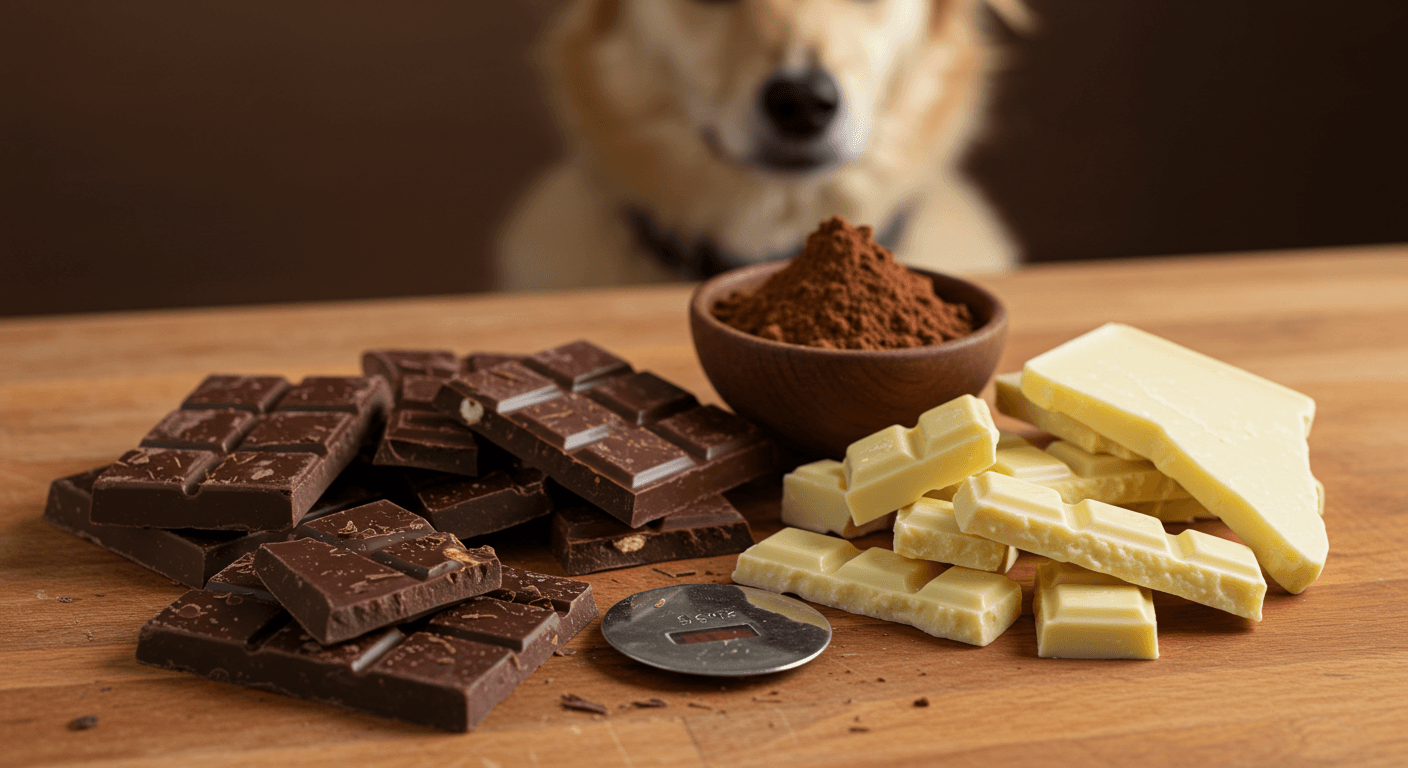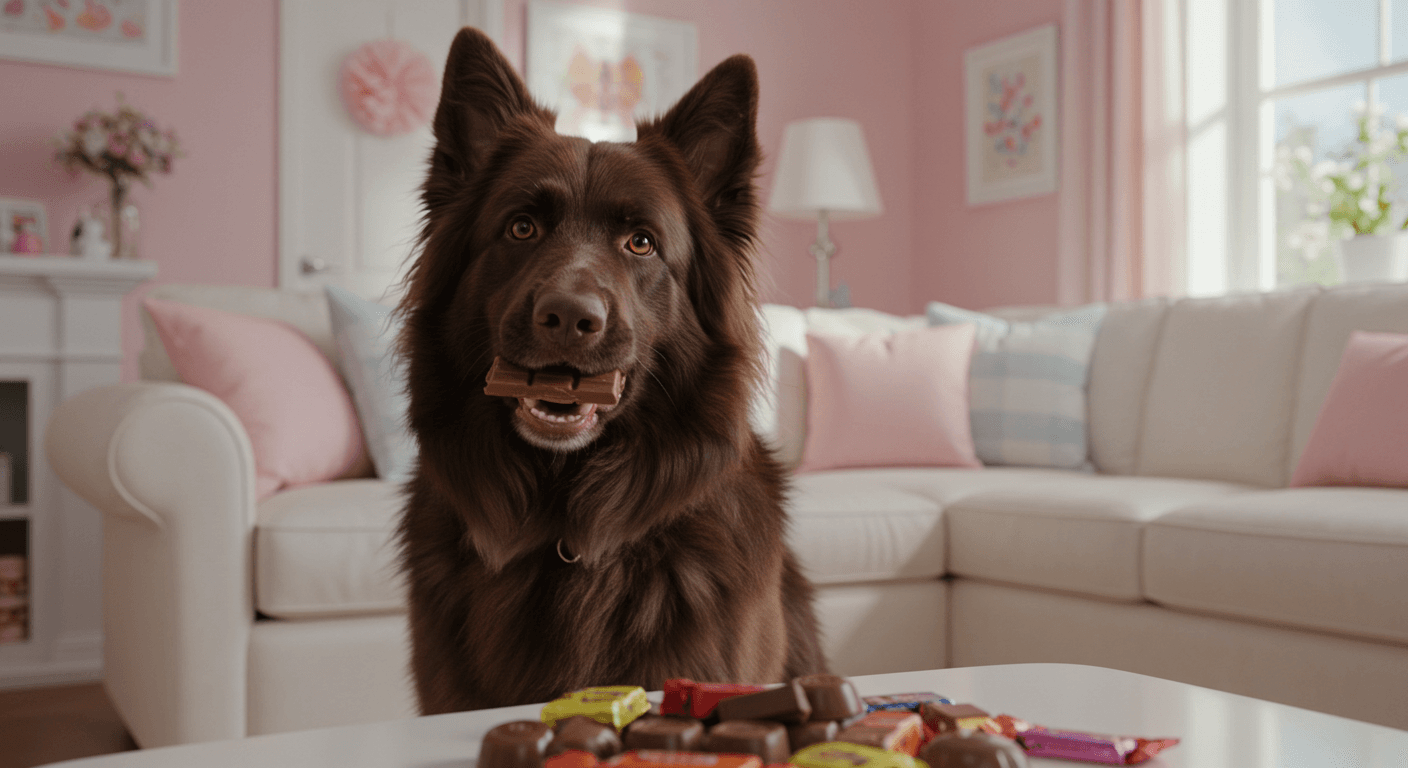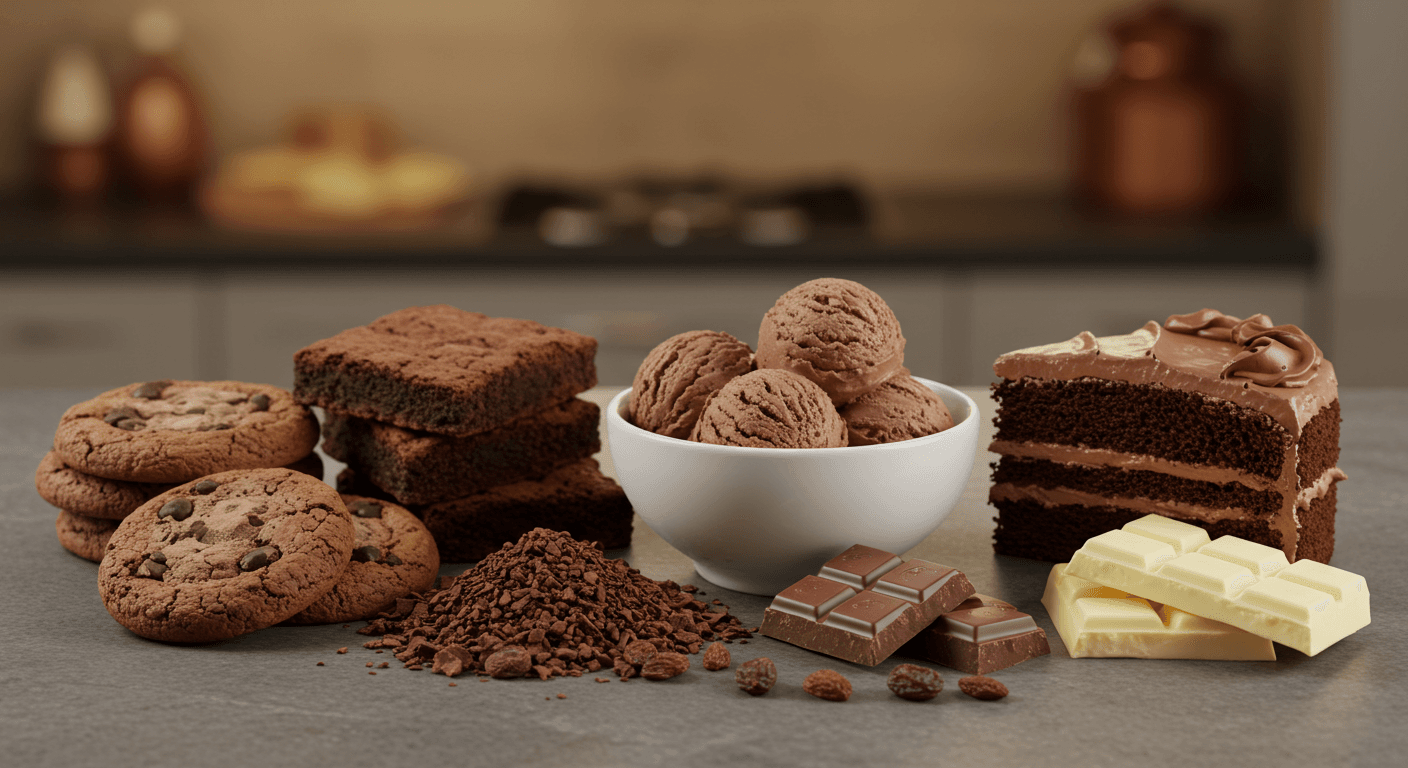Ever caught your dog sniffing around a chocolate bar and felt that jolt of panic? You’re not alone. Chocolate can be seriously harmful to dogs, and many pet owners don’t realize just how small an amount can do real damage—especially when it’s dark chocolate. If you’re asking yourself, “how much dark chocolate can kill a dog?” you’ve come to the right place. This guide breaks down what makes chocolate toxic, how to spot symptoms, and what to do if your dog gets into any kind of chocolate treat.
Whether your dog ate a chocolate chip cookie or devoured brownies, this information will help you assess the situation and take the right steps to keep your furry friend safe.
Why It’s Toxic
Chocolate contains two main troublemakers: theobromine toxicity and caffeine. We humans can handle these just fine, but dogs can’t process them easily. Theobromine, in particular, sticks around in their bodies and can overstimulate the heart and nervous system.
Dark chocolate and baking chocolate carry the highest amounts of theobromine, making them the most dangerous. Even white chocolate dogs might eat isn’t good for your pup because it’s loaded with sugar and fat. So if you’re wondering, “is white chocolate bad for dogs?” it’s not as risky as dark chocolate, but it’s definitely not healthy.
How Much Dark Chocolate Can Kill a Dog?

So, let’s tackle the big question: “how much dark chocolate can kill a dog?” It really comes down to the dog’s weight, the type of chocolate, and how much was eaten. Here’s the scoop:
- Dark Chocolate: About 0.13 ounces (roughly 3.7g) per pound of your dog’s body weight can lead to serious symptoms. Even less can be lethal for smaller or more sensitive dogs.
- Milk Chocolate: Wondering “how much milk chocolate is bad for a dog?” It takes closer to 0.5 ounces (14g) per pound to cause trouble, but that can still happen faster than you might think—especially if your dog ate a chocolate chip cookie or even part of a chocolate cake.
- Unsweetened Baker’s Chocolate and Cocoa Powder: These products are exceptionally concentrated. Just 0.1 ounces (2.8g) per pound can be deadly.
- White Chocolate: “Is white chocolate dangerous for dogs?” It barely contains theobromine, but it’s high in sugar and fat. White chocolate dogs might eat could still upset their stomach or cause other problems.
As an example, a 20-pound dog might show toxic symptoms after just 2.5 ounces of dark chocolate—basically half of a premium dark chocolate bar. Smaller breeds are in even greater danger. A single square of dark chocolate could mean a trip to the emergency vet chocolate for a Chihuahua.
How Much Dark Chocolate Can Kill A Dog?
The Impact of Other Foods
Sometimes it’s not just a chocolate bar you need to worry about. Here are a few common culprits that can still pack a theobromine punch:
- Chocolate chip cookies
- Brownies (if your dog ate brownies, there may be concentrated dark chocolate or cocoa powder involved)
- Chocolate cake
- Chocolate ice cream (if you’ve ever wondered, “can dogs eat chocolate ice cream?” the answer is a serious no)
If your dog ate a chocolate brownie or you find yourself saying, “my dog ate a chocolate brownie!” don’t wait—figure out how much chocolate was actually in there and call the vet if you’re unsure.
Symptoms of Toxicity
Chocolate poisoning can sneak up on you. Signs typically appear 1–12 hours after your dog chows down, and they can linger for up to 72 hours. Watch out for:
- Vomiting or diarrhea
- Restlessness or hyperactivity
- Rapid breathing or panting
- Excessive thirst and more frequent bathroom breaks
- Fast or irregular heartbeat
- Tremors, shaking, or even seizures
- Clumsy movement or lack of coordination
- In severe cases, collapse or coma
The severity depends on how much chocolate your pup ate, your dog’s size, and how quickly you step in to help.
What to Do if Your Dog Eats Chocolate

“Help! My dog ate chocolate chip cookie pieces!” or “My dog got into brownies!” These moments can be scary. Here’s a quick, step-by-step plan:
- Stay Calm
Panicking won’t help your dog. Take a breath and assess the situation. - Gather Details
- What type of chocolate did they eat (dark, milk, baking, white)?
- About how much was eaten?
- How much does your dog weigh? (Estimate if you’re not sure.)
- Use a dog chocolate calculator
These tools give a rough idea of the risk, but always confirm with a vet if anything seems questionable. - Call Your Vet or a Pet Poison Hotline Immediately
- Especially important if your dog ate dark chocolate or baking chocolate.
- Share all your collected info (weight, type/amount of chocolate, time of ingestion).
- Follow Professional Advice
- Some folks suggest home remedies, but these can be dangerous if done incorrectly.
- Only induce vomiting under vet guidance.
Remember, even if your dog initially acts fine, chocolate toxicity symptoms can escalate quickly. Swift action could save your dog’s life.
Chocolate Variants & Hidden Dangers

Chocolate comes in many forms, and each poses its own threat. Here are a few to keep on your radar:
- Dog ate chocolate chip cookie: May not seem like much, but a small cookie could be a big problem for a toy breed.
- Dog ate brownies or “my dog ate a chocolate brownie”: Brownies often have concentrated chocolate or cocoa powder. If your dog ate chocolate brownie or cake, it’s time to call the vet.
- Dog ate chocolate cake: Cake can have multiple chocolate sources—frosting, cocoa powder, chocolate chips… you name it.
- Can dogs eat chocolate ice cream?: Not safely. Besides chocolate, it has high sugar and fat content.
- White chocolate dogs might get into: It’s low in theobromine, but still unhealthy overall.
- Cocoa mulch in the yard: It smells good to dogs but contains dangerous levels of theobromine.
- Raisins and chocolate: If you have a raisin-packed chocolate cookie or brownie, remember that raisins are also toxic to dogs. In that case, use a dog raisin toxicity calculator and call your vet immediately.
How Vets Treat Chocolate Poisoning
Worried about what happens if you rush your chocolate-loving dog to the vet? Here’s the general process:
- Exam and Assessment
Your vet will check your dog’s weight, overall health, and estimate how much chocolate was consumed. - Decontamination
- They may induce vomiting, which is most helpful if it’s done within 1–3 hours of ingestion.
- Activated charcoal dog might be given to absorb any remaining chocolate in the stomach.
- Supportive Care
- IV fluids help the body flush out toxins.
- Medications can control vomiting, heart rhythm issues, or seizures.
- Your dog will be closely monitored until symptoms lessen.
Serious cases might need hospitalization, but early care greatly improves the chance of a full recovery.
Prevention & Safe Alternatives
Thinking “What if my dog ate chocolate?” is something nobody wants. Prevention is so much easier than treating an emergency. Here are some tips:
- Keep chocolate on high shelves or in closed cabinets.
- Let family members and visitors know not to share chocolate or leave it within reach.
- Double-check wrappers and throw them out securely so your dog can’t dig them out of the trash.
- Be especially alert during holidays like Halloween and Christmas when chocolate is everywhere.
If you want to reward your dog, swap out chocolate with safe treats like apples (without the core), carrots, green beans, or homemade frozen dog snacks. That way, your pup can enjoy something tasty without the risk.
When it comes to “how much dark chocolate can kill a dog,” the hard truth is that it doesn’t take much. Even small amounts can be life-threatening if your pup is tiny or extra sensitive. And while milk chocolate or white chocolate might seem less dangerous, they’re still unhealthy, and accidents can happen.
If you find yourself in a chocolate emergency—whether your dog ate a chocolate chip cookie, a chunk of cake, or a brownie—act fast. Know the symptoms, use a dog raisin toxicity calculator if raisins are involved, and call your vet right away. It’s always better to be safe than sorry.
By being watchful, keeping chocolate out of paw’s reach, and knowing what to do if your dog does get a sweet tooth, you’ll help ensure your furry friend stays happy, healthy, and chocolate-free for the long haul.



